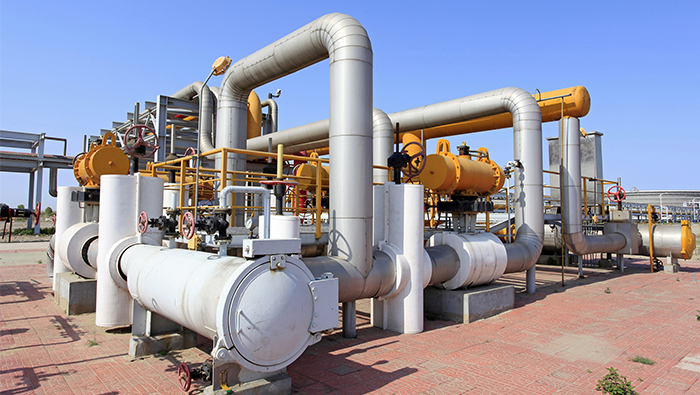
Muscat: After touching a 14-month high last month, the rally in oil prices eased after witnessing consistent declines at the start of April-2021, according to a new report.
Demand trends across markets remained clouded but the broader optimism saw rising output across the board, the Kuwait based investment strategy and research firm, Kamco Invest said.
“However, despite the increasing pace of vaccinations worldwide that supported oil prices as end product demand surged, the resurgence in COVID-19 cases in key oil markets in Europe and India over the last few weeks forced crude oil to trade near US$60 per barrel,” the report pointed out.
The rally in oil prices came to a halt during the second half of March-2021 led by a number of factors but was primarily led by a sentiment that the levels of around US$70 per barrel were unsustainable as there were indications of higher output from the US as well as speculations over Opec+ next move on its near term output policy.
However, prices stabilised after touching US$60 per barrel despite the announcement of increasing output from the Opec+. The resilience indicated confidence in the demand outlook for the year that was backed by forecasts from several agencies across the board.
The US EIA raised its oil price forecast for this year and the next. In its STEO, the agency now expects Brent crude prices to an average of US$62.28 per barrel in 2021 against its previous forecast of US$60.67 per barrel in the previous forecast, whereas in 2022 prices are expected to average at US$60.49 per barrel against the previous forecast of US$58.51 per barrel.
The consensus estimates for Brent also shows the crude grade consistently above the US$62 per barrel mark over the next six quarters. The average price for the Opec crude basket stood at US$64.6 per barrel during March-2021, the highest in 14-months and a monthly increase of 5.7 per cent.
Kuwait crude grade also had a growth of 5.8 per cent to average at US$64.9 per barrel whereas Brent spot crude averaged at US$65.6 per barrel, a 5.4 per cent monthly increase from US$61.3 per barrel last month, Kamco Invest said.
Trends across markets remained extremely divergent as seen from increasing travel trends in the US and strong trade data in China, as compared to new restrictions and curbs in Germany, France and India and a number of new restrictions in several other countries.
There were hopes of higher global oil demand as vaccinations efforts have picked up globally and are expected to support economic activity.
All the three agencies, the International Energy Agency (IEA), Organisation of the Petroleum Exporting Countries (Opec) and the US Energy Information Administration (EIA), have made upward revisions to demand forecast for 2021 ranging from 150,000 barrels per day (tbd) to 200 tbd in their latest monthly reports.
However, the bulk of the growth in oil consumption is expected to come during the second half of 2020, while the IEA slashed prediction for the current quarter.
World oil demand
The Opec raised world oil demand estimates for 2020 by around 0.1 million barrels per day (mbd) and demand for the year is expected to have contracted at a slightly lower pace of 9.5 mbd to average at 90.5 mbd.
The upward revision reflected positive changes to demand estimates for both the Organisation for Economic Co-operation and Development (OECD) and the non-OECD regions.
For the former, demand estimates was relatively marginally mainly backed by better-than-expected data for the fourth quarter of 2020 resulting in a demand decline of 5.6 mbd for the OECD region. The data for OECD Americas and Europe were revised upwards led by better demand from the petrochemical sector. For the non-OECD countries, the upward revision was much bigger by almost 0.1 mbd and demand is now estimated to have contracted by 3.9 mbd. The positive revision mainly reflected better demand data for China.
World oil demand forecast for 2021 was also raised by the Opec by around 0.1 mbd. Demand is now expected to average at 96.5 mbd this year showing an increase of 6.0 mbd. The revision reflected an upward revision to demand data for the second half of 2020 that was partially offset by a downward revision for the first half of 2020.
Opec expects the first half of 2021 demand to be lower due to the new COVID-19 related restrictions in OECD Europe and a sluggish first quarter 2021 oil demand data for the non-OECD region.
However, for the second half of 2021, a stronger expected economic rebound supported by the stimulus programmes and easing of COVID-19 restrictions and acceleration of vaccine administrations mainly in the OECD region is expected to result in stronger-than-expected demand recovery.
Non-Opec oil supply estimates for 2020 witnessed an upward revision of 42 tbd and supply is estimated to have declined by 2.52 mbd to an average of 62.89 mbd. The revision reflected higher supply from the OECD Europe region, Malaysia and the US.
The forecast for 2021 non-Opec oil supply was also revised up by 24 tbd and production is expected to now grow at 0.9 mbd to average at 63.83 mbd. The revision was mainly on the back of lower expected supply from Russia (-58 tbd) and Qatar (-14 tbd) partially offset by an expected increase in supply from Azerbaijan (+27 tbd), Australia, China and Canada.
The OPEC expects continued growth in the US as drilling pickup led by higher prices and incomplete wells are completed. In addition, although the E&P capex is expected to increase year-on-year in 2021, it will remain well below 2019 levels.